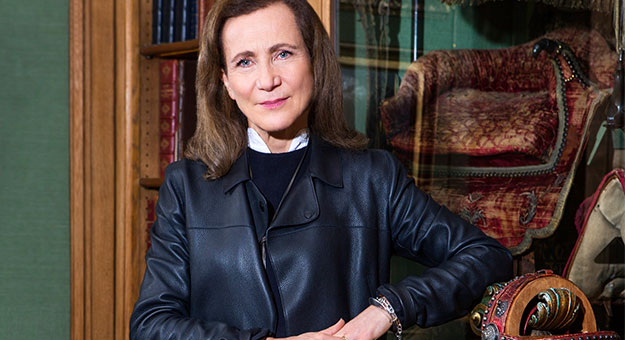The artistic director of the cultural patrimony of Hermès, Menehould de Bazelaire du Chatelle, takes us on a rare tour of the Emile Hermès collection, the heart and soul of the brand
24 Rue du Faubourg Saint-Honoré, the site of the Hermès flagship store in Paris, where snaking queues before the store opens is a common sight, with shoppers trying their luck at getting their hands on the brand’s most desirable handbag—the Birkin. Spread over two vast floors, the Faubourg Saint-Honoré store is perpetually busy; if you didn’t know any better, you’d think there was a sale going on.
In stark contrast, on the floor just above the store, lies the Emile Hermès collection, a living museum of sorts that showcases Emile Hermès’ personal collection. Off limits to the public, only a privileged few are allowed to enter what used to be Mr Hermès’ office, that has since been expanded to showcase a larger range of items from his collection. I was fortunate enough to meet with Menehould de Bazelaire du Chatelle, keeper of the Emile Hermès collection who took me on a private tour of this wondrous ‘secret’ space.
Cai Mei: “Can you please tell us about this collection and how it came about?”
Menehould de Bazelaire: “Emile Hermès started his collection in the late 19th century, at the age of 12, and he never stopped collecting until his death at the age of 80, in 1951. After he died, his collection was never interrupted, although we continued to add to his collection, to enrich it, exploring the path that Emile Hermès opened for us—the discovery of beauty, comfort, and elegance, not just through the ages, but also geography. There are books, paintings, and prints gathered here, more than 13,000 pieces from all around the world, and they all tell stories of movement and elegance, the movement of human beings. His vision of the past was a vision of a long story, a neverending story of innovation. Something that lasts when everything changes, the need for beauty to accompany our everyday movement. His collection was, for him, a place to find inspiration and to keep this vision of history in perpetual revolution. It’s a treasure trove open to Hermès designers, mainly the scarf and tie designers, but also to the jewellery designers like Pierre Hardy. It’s not just equestrian things Emile Hermès collected—otherwise it was have been an obsession or perhaps boring. His eyes were open to the vast world.”
What a wonderful place to be inspired by.
This is where we can play. It’s very important to have a break—the world of fashion is like a struggle now. We always have to find something new, but in here, it’s a timeless place that transcends the ages. There are no boundaries; one can just dream and have the opportunity to browse and play, to have pleasure and fun and to know more about the roots of Hermès. We’re not created from nothing. Behind each creation of Hermès, there is a memory, and we love to remember that we have a beautiful heritage.
When Emile Hermès died, the museum stopped here, just outside his office. The rest of it was added 5 years ago. The collection was like a jungle, there were so many items. Many of these objects, books, leather panels and more were in storage. We still have items in storage but it’s a pleasure to have part of the collection to be on view. You’re able to understand more about the secrets and the soul of Hermès. What we admire, collect, maybe not made by Hermès, is a way to express our idea—what we love is a portrait of ourselves. It’s a portrait of Hermès, what passions we have.
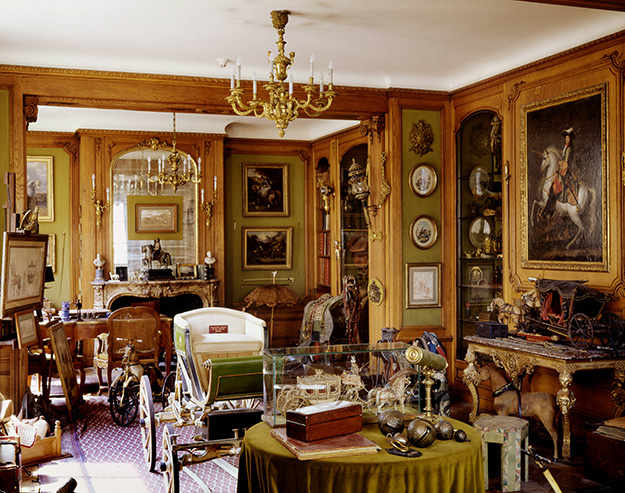
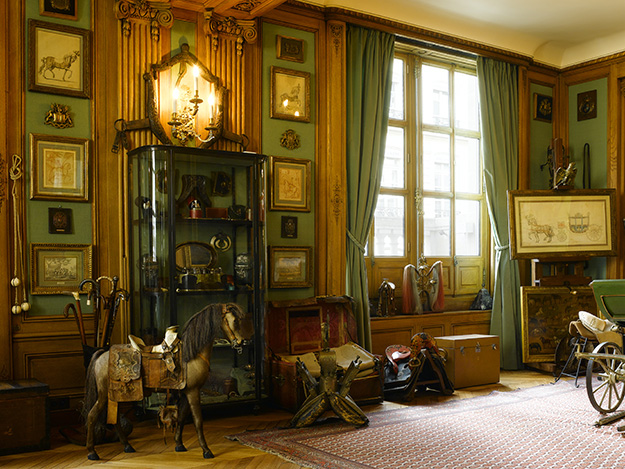
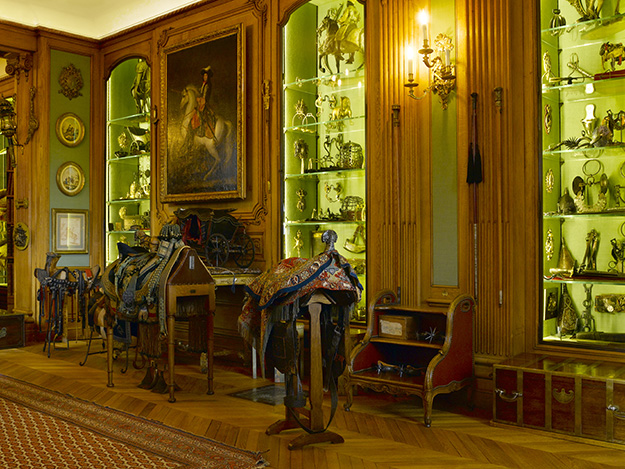
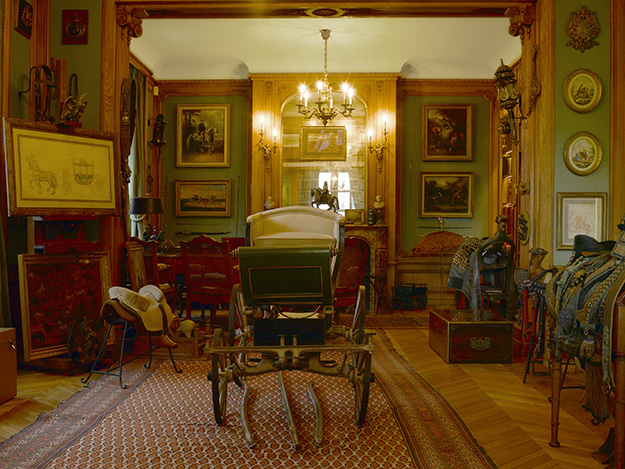
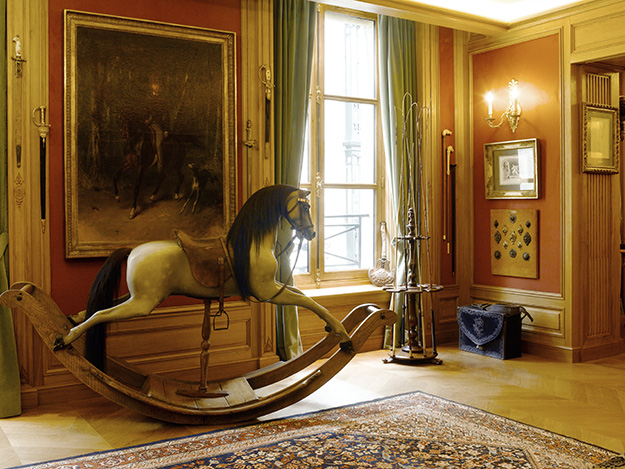

What was the first object that started Emile Hermès’s collection?
The first thing he collected was a cane containing a little parasol to be offered to a lady. It cost him 2 French francs, and that was the totality of his wealth at that time. When he got home, his parents were a bit upset because he had spent all his money instead of saving it at the bank, but he discovered that to collect is to develop imagination and passion.
How interesting that a 12-year-old would spend all his money on a cane.
He was very curious, and a passionate collector fascinated by the past. The cane was made in 1801 so it was an antique when he bought it. The past was something he found attractive but Emile Hermès was also a visionary—he was the only one in his family who understood the importance of the motor car, and the necessity to adapt his company to the age of the automobile. At the head of the company after WWI, he was able to diversify the business—he was the first to propose clothes, belts, leather goods, accessories, jewellery, perfumes and more, which gave the company a new lease of life, which nearly ended due to the decline in use of horses as a mode of transportation. Our original activity, after all, was to dress only horses and horsemen but he had the energy and enthusiasm to explore new fields.
I see so many canes in the collection. Can you tell us more about your favourite ones?
We love to buy canes. This cane here has a candlestick at the end, just in case you can’t sleep at night. Another cane, has a little pouch to put your mushrooms in, in case you find some during your strolls in the forest. The canes are from all over the world, France, England, some from Switzerland. This cane is topped by an eagle and although looks innocent enough, it’s also sharp enough to injure an attacker, so it doubles up as protection as well. A rare find is a cane made with the vertebras of the shark backbone. This was popular in the navy to offer to the captain. A fun one has the head of the horse and when you push a button, the horse sticks its tongue out. This collection is not completely serious; a collection is a way to explore different materials used by craftsmen of the past, but is also a way to escape.
The horse is of course a recurring figure in the collection.
Yes, we find a lot of things related to the horse. We always remember that the horse was Hermès’s first customer, and it is important for us to pay homage to our first customer. The horse is a demanding customer. It doesn’t care for the brand or logo—he just cares about perfect comfort and elegance in his movement. If it’s worthy of the horse, it will be worthy for our customer of today.
What’s your favourite horse object?
I love this rocking horse that used to be a toy belonging to Julie Hermès, who married Emile Hermès. It’s from the late 19th century, and probably English because rocking horses were very popular in England at that time. Its mane is made with real horse hair. We have plenty of photos of little Julie on the horse. The horse was the favourite toy of the four daughters of Julie and Emile, and now, it has been six generations of the Hermès family who were happy to play with this rocking horse.

What are some of your other favourite pieces in this collection?
A trunk, as it is an invitation to travel. You open the trunk and you’re in another world. I also like this lacquered leather pillow. I’ve been told that it’s important to have your own pillow—you share your dreams with your pillow so it shouldn’t be shared with others.
Can you tell us more about an object in particular that the Hermès designers have been inspired by?
Probably this German equestrian book called Della Cavalleria. The title is Italian but the book is actually German. It contains everything you need to know about horsemanship and how to take care of your horse. It’s a beautiful source of inspiration for our designers. A necklace designed by Pierre Hardy is called Della Cavalleria, inspired by the book. One of our scarf designers, Virginie Jamin, was very enthusiastic about the collection. She was impressed by the beauty of the prints in this book and designed a scarf and called it Della Cavalleria. It’s a neverending story of inspiration.
Silks are an important component at Hermès. Can you please share some of the brand’s history with silk with us?
In the early 20th century, the jacket for the jockey was made of silk. Hermès started a workshop making jackets for jockeys in 1903, but eventually closed the workshop in 1973, as jockeys stopped dressing in silk, and started wearing synthetic fabrics. The supplier for the silk we used was the one who asked Emile Hermès to sell silk scarves for women, which Emile Hermès accepted since this man was his supplier. Silk came from Japan at the time. Our scarves, ties, and activity in the world of silk is really due to the horse.
“What we admire, collect, is a way to express our idea—what we love is a portrait of ourselves. The Emile Hermès collection is a portrait of Hermès, the passions we have.”
Original: https://www.buro247.my/fashion/insiders/none.html
You’ve been the curator of the Emile Hermès collection since 1986. What was your first reaction when you saw the collection?
When I first saw the collection, I was amazed. It was a different vision from what I had before. Hermès is a luxury brand, and here was this mysterious place, very warm, and I thought to myself, ‘I think I will love this company’. The first time I came in here, I felt like I was under a Christmas tree. We have a photo of his office from 1923 and it still looks the same. Sometimes there are some small changes because we lend items out for exhibitions but the spirit is exactly the same.
What’s the most unique item in his office?
Perhaps the painting which inspired our logo, which hangs behind Mr Hermès’s desk. It’s from 1830-1840, the Romantic period, made in Paris by the artist Alfred de Dreux, who specialised in painting horses and horse carriages during that period. Mr Hermès had initially bought this painting for his collection.
Why did he choose this painting to be the logo for his company?
He didn’t explain but I think it’s a very whimsical painting, with gouache and watercolour, showing a horse-drawn carriage, and it’s a direct memory of the beginning of Hermès and we love to remember where we come from. This painting also shows the minute before departure. Everything is ready, the two horses, a little groom—just one character is missing: the one who will drive, the owner of the carriage. This type of carriage, light and well-designed, were also appreciated by women. You have to be a skillful driver because the two horses must go at the same gait otherwise it’s an accident waiting to happen. The idea to be ready for a perpetual departure was very stimulating for Emile Hermès. He loved the philosophy for his brand—remember to be ready in elegance, and lightness. He loved the idea of two horses looking like one. The first time he asked for this painting to be printed as a logo, the printer made a mistake by printing it as one big horse. Mr Hermès then asked the printer to remake the screen to show two horses—two horses are a strong symbol, a universal symbol of balance and harmony, between two different strengths. It’s important to keep this harmony. We must remember to create balance between the past; we’re very proud of our heritage, but also the heritage must be balanced with our capacity to innovate, to go further, to imagine, and to be always a keen observer of evolution.
What’s the biggest challenge of maintaining this collection?
The rooms are climate controlled to preserve the objects. We constantly enrich this collection, to keep it alive. But this collection will not exist if nobody looks at it; it’s meant to be shared. Emile Hermès was very happy to share his collection with people. We have two guest books here signed by the people who have visited his collection. Hermès is a brand, but we are also able to tell stories. For Emile Hermès, an object is much more than an object. They accompany you in your life, they give us pleasures, and poetry we need in our everyday life. It’s challenging to create beauty that lasts more than one generation. We also learn to take care of what was made by the human hand and to respect that. We’ve become a throw-away society. This is not fast fashion, where something is fashionable just for one month and then we don’t want it anymore. At Hermès, we have a different vision of beauty.
| SHARE THE STORY | |
| Explore More |
